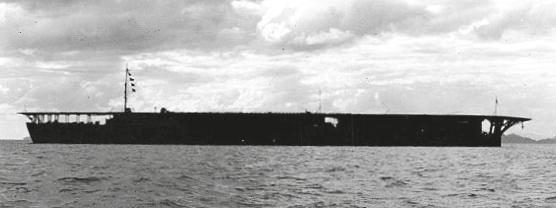
1 minute read
On the road to war
Rivaleconomicand territorial ambitionslaidthe foundationfor thePacific War, andChina wouldbethe settingfor theopeningact of theepicand devastating dramaabout to ensue…
WhileJapan had to re-evaluate itstactics in thewakeofits expensiveconflict with Russia,its strategy of extendingits influence across Asia remained unaltered. To furtherdevelop as an international poweritbecameclear to Japanese leadersthat thecountry needed adeepereconomyand greaterpoolof resourcestocallupon.
Thesamethoughtswereforming across thePacificinAmerica whereTheodore Roosevelt’sadministration had significantly expandedUSinterests overseas in the name of cash andasset generation.The fact that thetwo had competingaimscaused concernonbothsides of theocean,and thecontrasting ways in which they went aboutachievingthemwould become the cornerstone of thetensions betweenthe twothatwould eventually lead to war.
Newcentury,new worldpowers
Forthe US,expansion was pursuedby diplomaticmeans andthrough supportfor itsburgeoningcapitalist business sector. Maintainingits isolationisttendencies, centralgovernmentrefrained from direct involvement in international affairs– butdid whatitcould to promoteAmericanbusiness interestsabroad,often wading into murky waters as it used variousmeans andbackchannels to manipulate foreignaffairs
Twonotable examples of this were in Hawaii,where American government representativeshad encouraged andeven orchestrated elements of acoupd’état againstthe Hawaiian royalfamilythat wouldeventuallyresult in US annexation of theterritory;and in Colombian-controlled Panama,where President Roosevelt –afterhis plansfor achannel linkingthe Atlanticand Pacificwererejectedbythe Colombiansenate–activelysupported Panamanian rebels in theirefforts to declareindependence. Once this had been achieved,the US purchasedcontrol of the Panama CanalZone for$10 million and Roosevelt’swaterwaywas built.
It was adifferent storyinJapan.While theAmericannationhad been builtona complexpolitical foundation that promoted itsthree branches of government –complete with checks andbalances–moreancient traditions ranthrough thenew Empire of Japanwhich gave ahighlevel of controlto itsemperor andalsoplacedanenormous amount of autocraticpower within the differentstrands of itsmilitary.
Whilethe US continuedwithits diplomacy –and itsmoresubversive tactics–Japan was farmoretransparent andwas not afraid to usemilitarymight to forcethrough itsaims. With theTreaty of Portsmouth having negatedRussian influence in thearea, in theearly 20th centuryJapan pushed theboundariesofits agreements with Americaregarding free enterprise in Chinabyconsolidatingits position in Manchuria.

Although tensions wouldboiloverinto otherissues–institutional discrimination againstJapanese-American immigrants on thewestcoast of theUnitedStates beingone of themajor examples –itwas Manchuria, andwider problems in China, which proved to be acontinuous sticking point. Theoutbreakofwar in Europe in 1914 meanta temporarycessation of diplomatic




